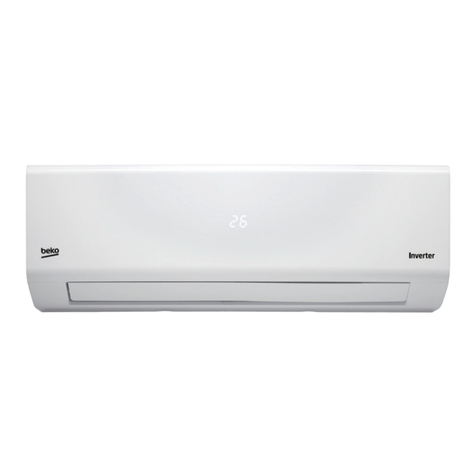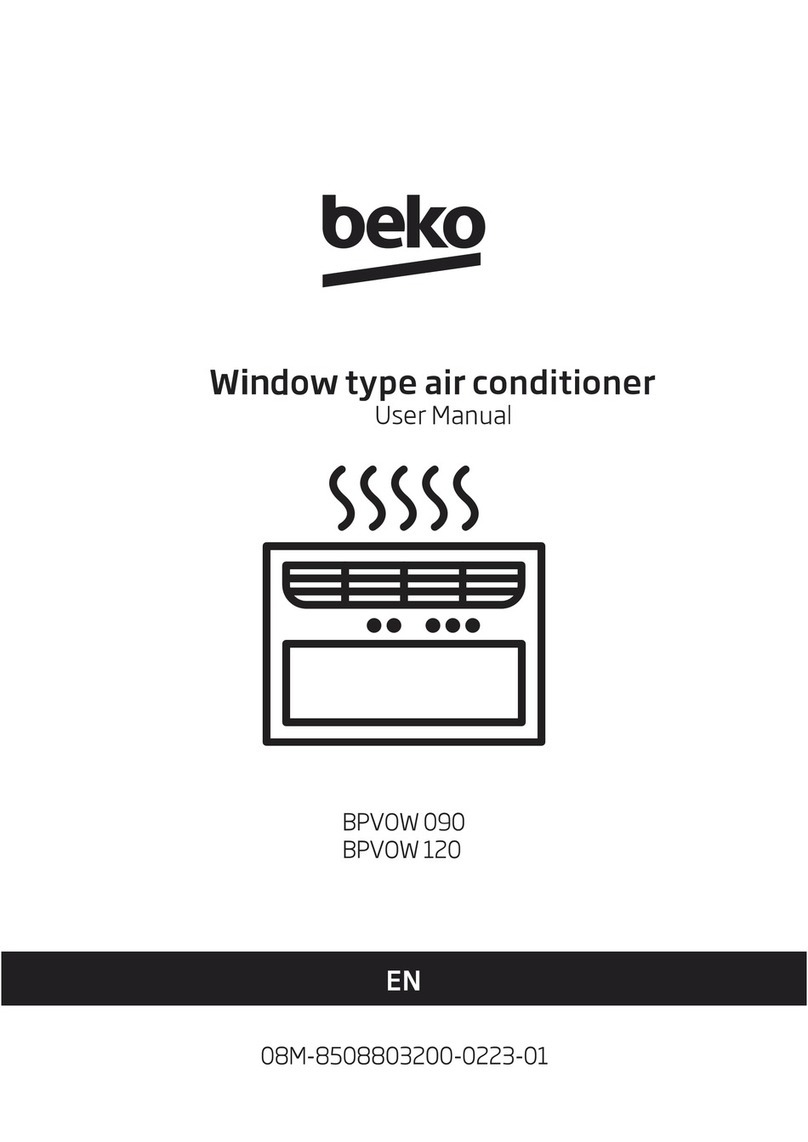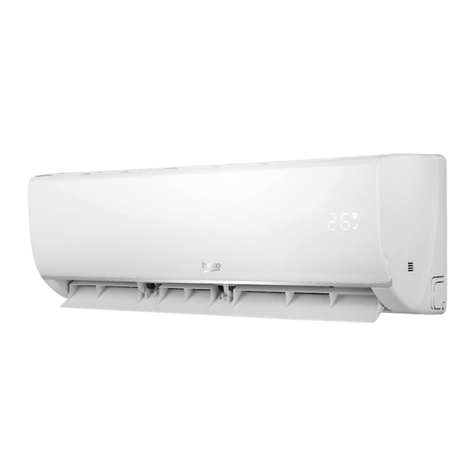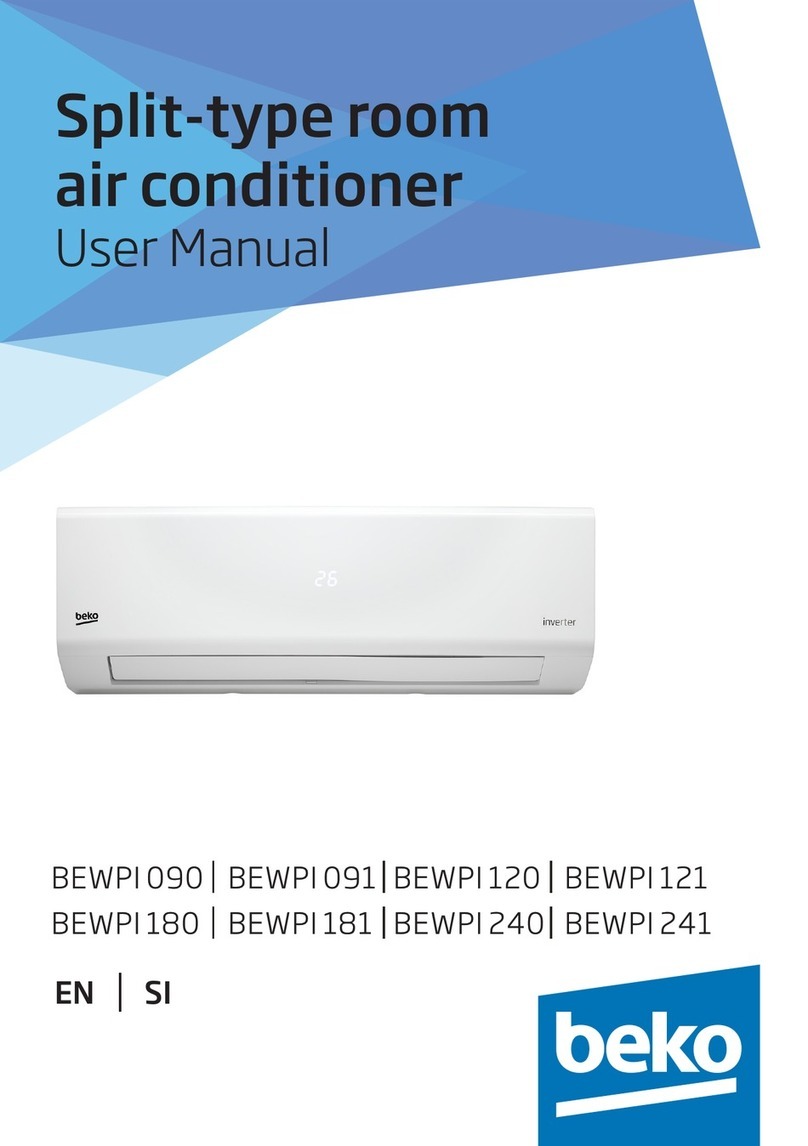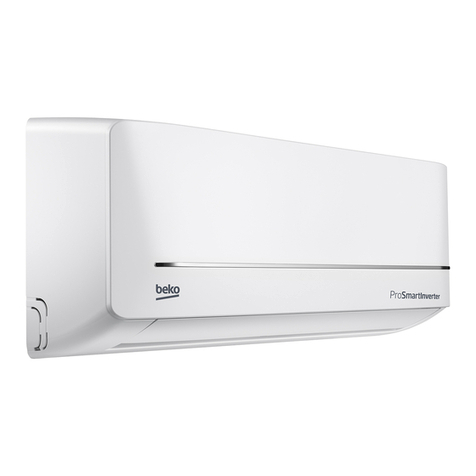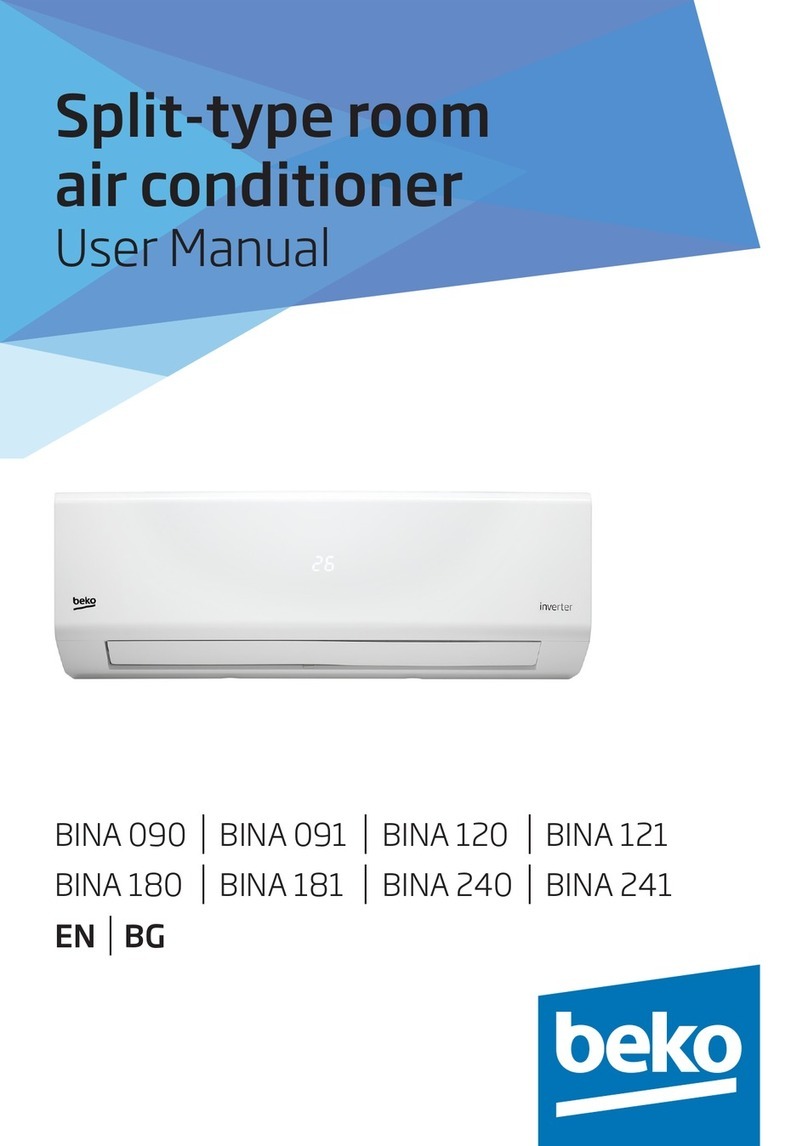Beko BS207C User manual
Other Beko Air Conditioner manuals
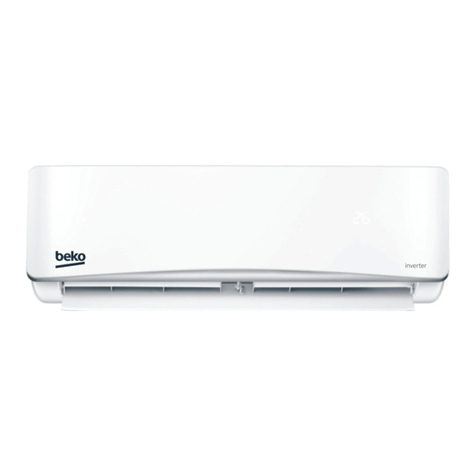
Beko
Beko BIN 090 User manual
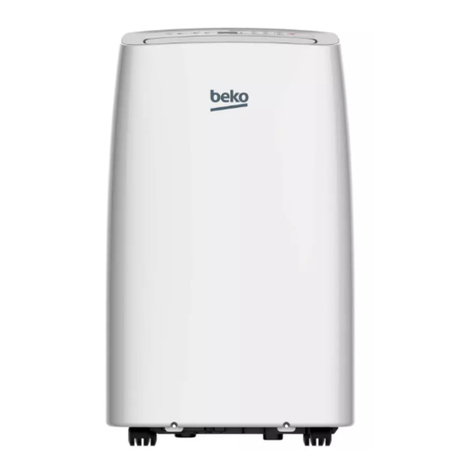
Beko
Beko BEPB 09C User manual
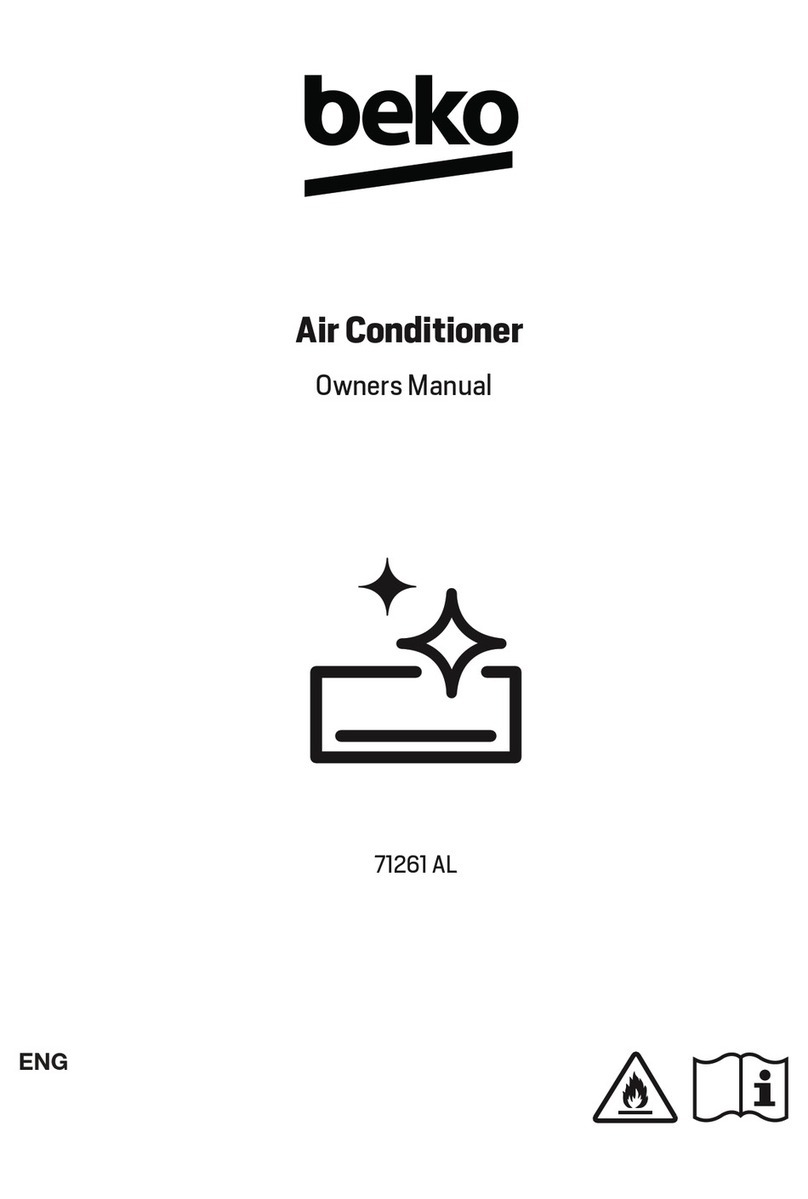
Beko
Beko 71261 AL User manual

Beko
Beko BEPN 09C User manual
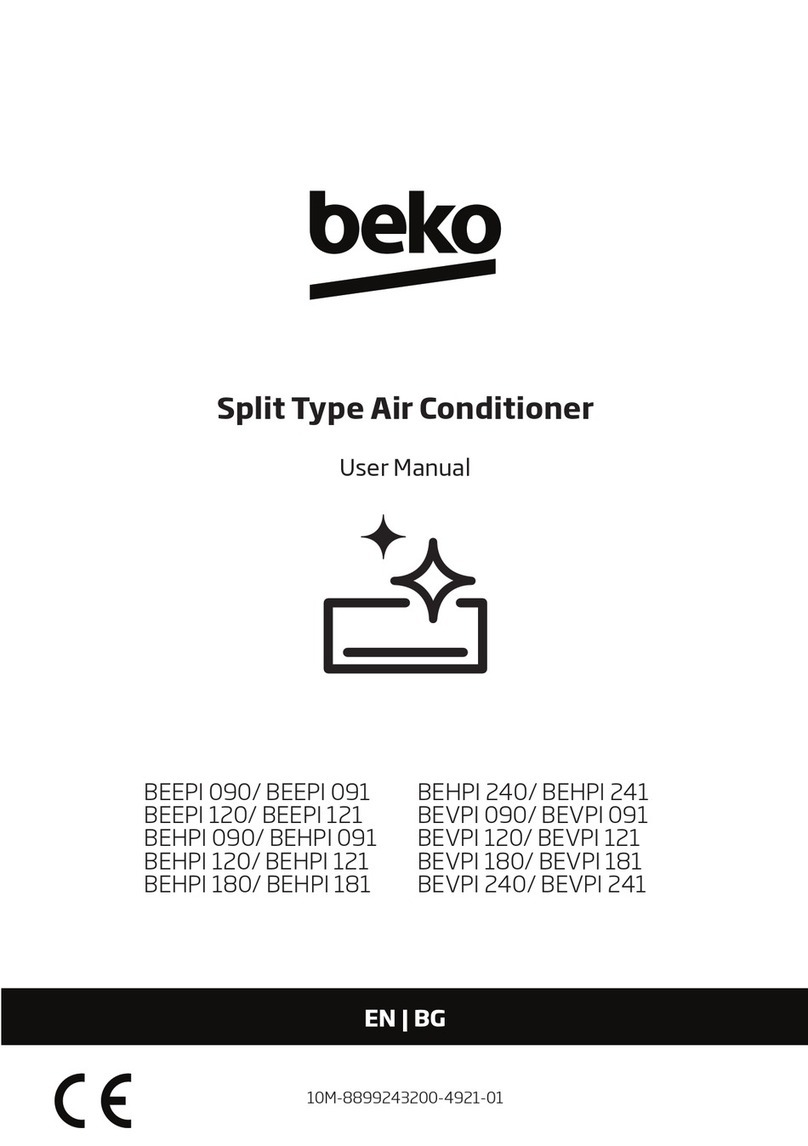
Beko
Beko 10M-8899243200-4921-01 User manual

Beko
Beko BS 107 CN User manual

Beko
Beko BIVPA 090 User manual
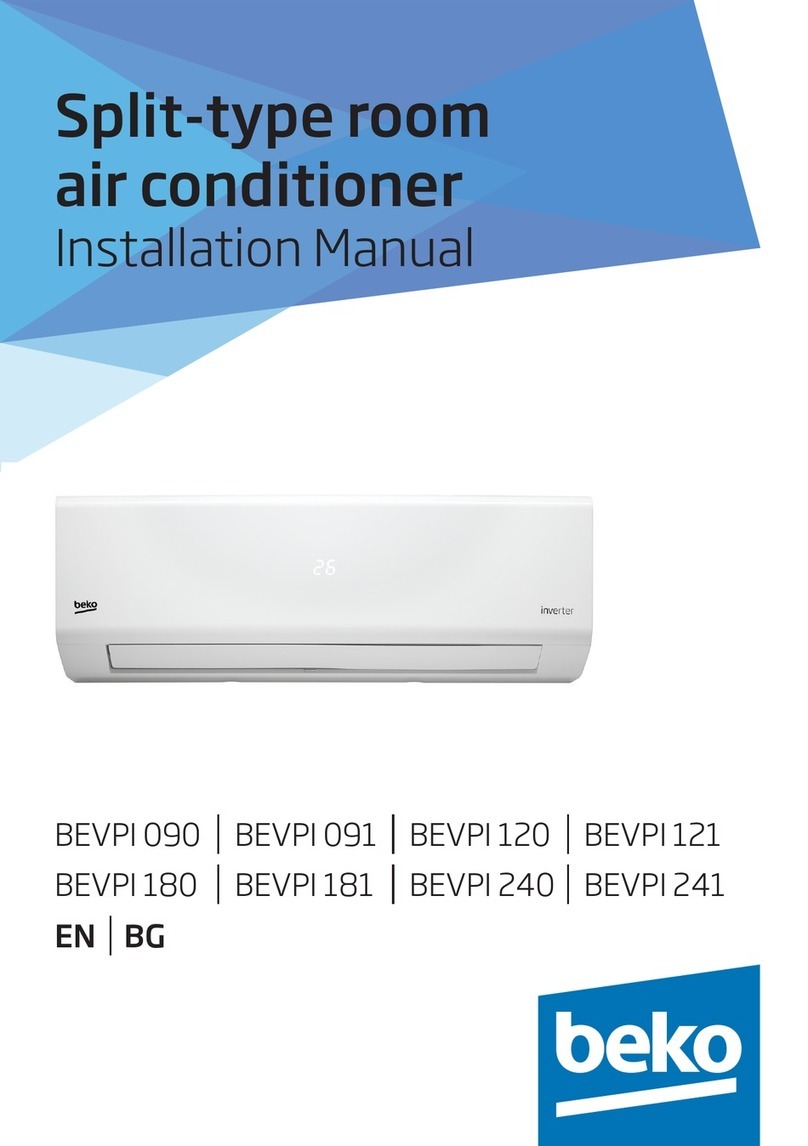
Beko
Beko BEVPI 091 User manual
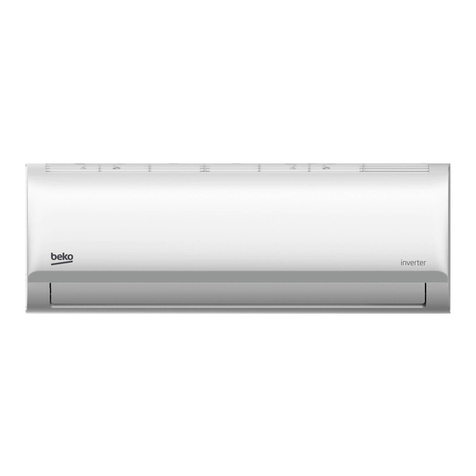
Beko
Beko BRVPF 090 User manual

Beko
Beko BEP 09C User manual
Popular Air Conditioner manuals by other brands

Fujitsu
Fujitsu ASYG 09 LLCA installation manual

York
York HVHC 07-12DS Installation & owner's manual

Carrier
Carrier Fan Coil 42B Installation, operation and maintenance manual

intensity
intensity IDUFCI60KC-3 installation manual

Frigidaire
Frigidaire FAC064K7A2 Factory parts catalog

Sanyo
Sanyo KS2432 instruction manual

Mitsubishi Electric
Mitsubishi Electric PUHZ-RP50VHA4 Service manual

Panasonic
Panasonic CS-S18HKQ Service manual

Panasonic
Panasonic CS-E15NKE3 operating instructions

Gree
Gree GWH18TC-K3DNA1B/I Service manual

Friedrich
Friedrich ZoneAire Compact P08SA owner's manual

Daikin
Daikin R32 Split Series installation manual
